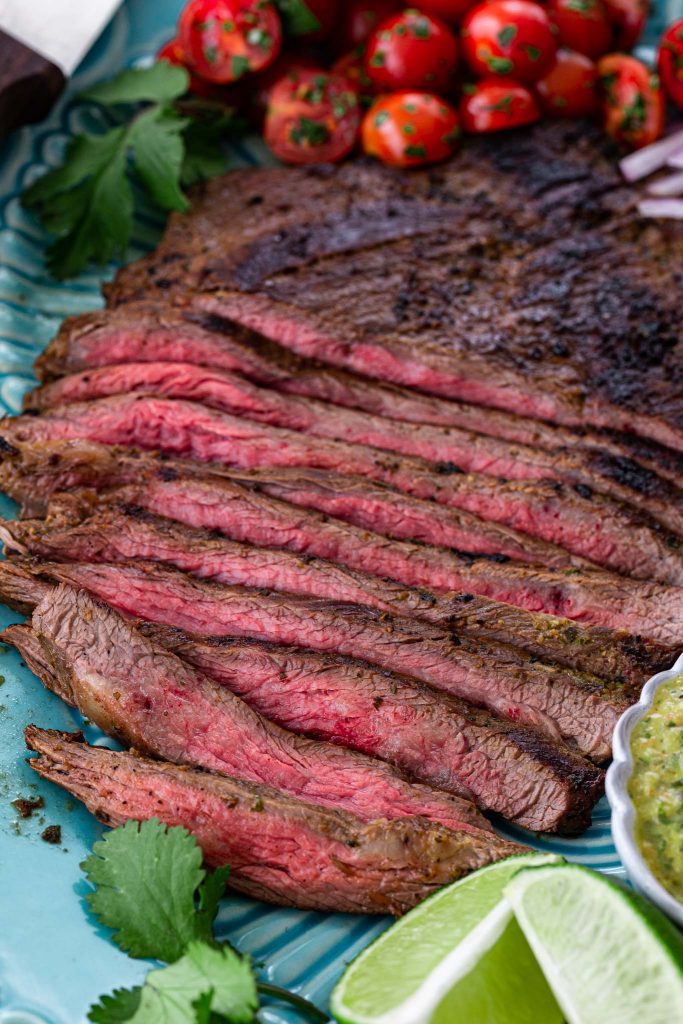Delicious Carne Asada: A Summer Steak Affair
This Carne Asada is truly a steak lover’s dream come to life! Imagine juicy slices of steak marinated to perfection, melting in your mouth with every bite. The exciting mix of citrus flavors from the marinade is sure to make this dish a staple in your summer grilling rotation!
An Authentic Carne Asada Recipe!
Welcome to grilling season, where the barbecue heats up and families come together for delightful outdoor meals. If you’re looking to impress, nothing does it better than a well-cooked steak! Trust me, my family gets excited just at the mention of steak, which is why this carne asada recipe has earned its spot on our dining table time and time again.
You’ll find the ingredient list for the marinade a bit lengthy, but it’s filled with easily accessible items that you might already have stocked in your pantry. The key to transforming a simple cut of meat into a flavor-packed meal is the marinade, so don’t skip it!
In this post, you will learn:
- How to prepare a flavorful carne asada marinade
- Best cuts of meat for carne asada
- Detailed cooking instructions for both grill and stove
- Tips for serving and storing leftovers
Plus, be sure to check out the printable recipe for easy reference!

What is Carne Asada?
Carne Asada, which translates to “grilled meat” in Spanish, is a beloved dish made from marinated and grilled steak, sliced thinly and served in tacos or on its own. This dish is a staple across Central America and has a pronounced popularity in northern Mexico, often being showcased at gatherings and celebrations.
Let’s not confuse carne asada with “asado,” a term that typically represents barbecue in South America—a topic for another day!
Ingredients
Gather these ingredients to whip up your carne asada:
- STEAK: Flank steak is my go-to choice.
- MARINADE: You’ll need the following:
- Onion
- Garlic
- Roasted tomato
- Roasted jalapeños
- Orange juice
- Lime juice
- Lemon juice
- White wine vinegar
- Soy sauce
- Brown sugar
- Mexican oregano
- Cumin
- Salt & pepper (to taste)
- Olive oil
- Fresh cilantro
What Kind of Meat is Carne Asada?
Traditionally, carne asada is made with skirt steak, flank steak, or flap meat. These cuts are quite similar, so you can easily choose your preferred one! While you could technically use other steak varieties, it’s best to steer clear of ribeyes and strip steaks since they shouldn’t be marinated due to their premium nature.
How to Make Carne Asada
The preparation of carne asada may differ by region and personal tastes, but the essential element remains the grilling of the steak. Below, I’ll provide directions for cooking on both the grill and the stovetop using a cast-iron skillet—perfect for when you’re craving carne asada any time of the year.
Carne Asada Marinade
- Roast the tomato and jalapeños: Cut the tomato and jalapeños in half. Remove the jalapeño seeds before placing them under a broiler for 3 to 5 minutes until charred.
- Make the marinade: In a blender or food processor, blend the roasted ingredients with all the marinade ingredients until smooth. Reserve one cup to drizzle over the cooked carne asada.
- Marinate the steak: Combine the steak and marinade in a gallon-sized ziplock bag, expelling any air before sealing. Refrigerate for a minimum of 3 hours, or up to 8 hours. Keep in mind that if you’re using flank steak, aim for at least 3 hours!
Olivia’s Tip
Roasting the tomato and jalapeños shouldn’t be skipped! This adds a hint of smokiness to the marinade, tames the heat of the jalapeños, and elevates the sweetness of your tomato.
How to Cook Carne Asada
Here’s how to bring your carne asada to life:
Grilling Instructions:
- Preheat your grill: For charcoal, set up for direct grilling over hot coals. For gas, ignite and preheat on high for 10 minutes.
- Cook the steak: Remove excess marinade from the steak and let it sit for 15 minutes at room temperature. Grill the steak on the hottest side, cooking for about 3-4 minutes per side until well charred.
- Rest and slice: Allow the steak to rest for 5-10 minutes off the heat. Slice thinly against the grain to serve.
Cast Iron Instructions:
- Remove marinade: Wipe off excess marinade and allow the steak to warm for 15 minutes.
- Preheat the pan: Heat a large cast-iron skillet over medium-high heat for about 5 minutes.
- Cook the steak: Sear for around 3-5 minutes on each side until the internal temperature hits your desired doneness.
- Rest: Let the steak rest for 5-10 minutes before slicing.
Temperature for Carne Asada
While the FDA suggests cooking beef to an internal temperature of 145°F, for flank steak, I recommend aiming for medium-rare, around 115-120°F. Cooking it to a higher temperature can make it tough and chewy. If you prefer your steak cooked more thoroughly, consider using skirt steak, which has more fat and retains tenderness better.
What to Serve with Carne Asada
I love serving carne asada on a large platter with the reserved marinade, fresh salsa (tomato salsa is my favorite), sliced avocados or guacamole, and warm corn tortillas. Sometimes, I’ll add sides like Mexican rice and beans for an even heartier meal.
This steak is versatile, so feel free to turn it into tacos, burritos, or tostadas as well!
Frequently Asked Questions
Can I make it ahead?
Yes, you can cook the steak in advance and reheat it later. Just be sure to cool it down to room temperature before storing in an airtight container in the fridge.
How long can I marinate steaks?
Steaks can be marinated for up to 8 hours. Avoid exceeding this time as the marinade can negatively affect the steak’s texture.
How long do leftovers last in the fridge?
Leftover carne asada can be refrigerated and enjoyed within 3 to 4 days.
Can I freeze Carne Asada?
Absolutely! You may freeze both raw or cooked carne asada. For raw steak, marinate it in a bag and freeze for up to 3 months. Cooked steak can also be frozen in an air-tight container for up to 3 months.
How to reheat Carne Asada?
The best way to reheat your steak is in a cast iron skillet. Heat a tablespoon of oil in the skillet over medium-high heat. Once it’s hot, add the steak, flipping once until it’s warmed through.











